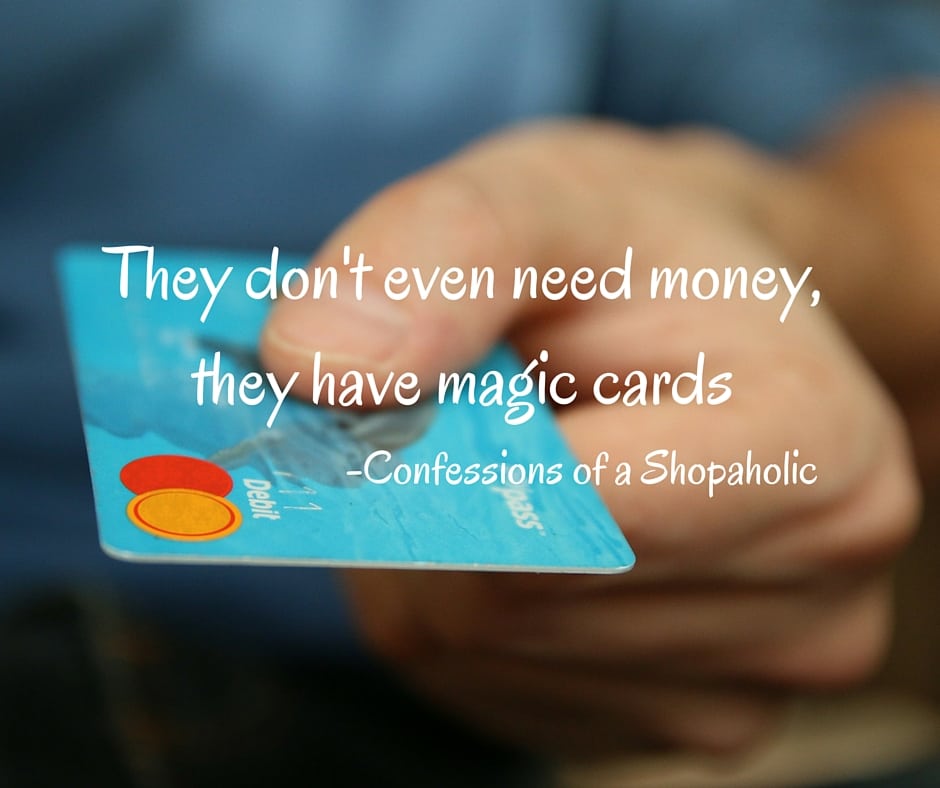“Mommy, you’re lucky you have a card to use. You’ll never run out of money to buy things. When can I have one of those?” I saw dollar signs flash in my son’s eyes while he spoke. The look of awe in my four-year-old’s eyes was alarming as she took in what her older brother was saying. Uh-oh. My son, believing he struck gold by figuring out how credit cards worked, made me realize that although we have planted the seed and have spoken to him about money, we needed to move onto the next step. He was ready to learn more about financial literacy. If you haven’t talked with your kids about money, and you think they’re ready, this is the time to do it during National Financial Literacy Month.
My son’s misconception about credit cards reminded me of those commercials with the old lady who misunderstood what it meant to “Post pictures on her wall.” I corrected my son, repeating what the lady’s friend said, “No, that’s not how this works, that’s not how any of this works!”
I reminded him that “Money doesn’t grow on trees.” He thought that unlike cash, the card provided unlimited money. He wasn’t aware that those shiny plastic cards are linked to the money in your bank account or that you’re borrowing money. Also, since he doesn’t visually keep track of his larger savings himself, such as his savings fund or college fund, I realized that it created another barrier toward him fully understanding how money grows.
No matter what month it is, it’s a good idea to start educating your children on money management while they’re young. There are different methods to help your kids on their journey toward financial literacy that you can tailor to their age.
Moonjar, a company working to bring financial awareness to children and families around the globe, suggests starting the conversation with kids through saving, spending, and sharing. They offer fun products to use that are perfect for small kids.

One method ideal for smaller children is the piggy bank. My little girl loves the idea of feeding her piggy. It’s a fun way to begin teaching them how to save and count money. You can upgrade the piggy bank as they grow by creating three different “banks” using labeled jars that encourage kids to be responsible for making their own independent financial decisions. One jar can be for spending, one for savings and one for sharing that goes toward a charity of their choice. Our children also enjoy sharing money with one another, occasionally feeding each other’s bank.
Another fun method we have been using as a family are playing board games like Monopoly and The Game of Life. They demonstrate cost versus value, motivating kids to make wise financial choices.
If your kids aren’t old enough for board games, or they’re more interested in digital games, take advantage of computer games like Practical Money Skills or mobile money apps.
Mobile finance apps recommended for kids:
- Savings Spree – Ages 7 and up, Cost: $5.99
- PiggyBot – Ages 6 to 8, Cost: Free
- Kids Money – Ages 5 and up, Cost: Free
- Renegade Buggies – Ages 6 to 11, Cost: Free
- FamZoo Ages 13 and up, Cost: Free
- Motion Math: Cupcake! – Age 8 and up, Cost: $4.99
- Celebrity Calamity – age 6 and up, Cost: Free
Here are additional resources and websites for families with kids of all ages:
- Smart About Money by The National Endowment for Financial Education (NEFE) helps you get started and be smart about your money by offering calculators for your expenses, worksheets, plans for how to save on multiple goals, and other tools and resources.
- Money Management International created FinancialLiteracyMonth.com. No matter what day or month of the year a consumer begins their 30 step path to financial wellness, it will help them to create a successful strategy to better their overall financial position.
- Teaching Financial Literacy to Teens offers tools and information about budgeting, credit, and debt.
- Sow enables children to register for goals like a college fund, a computer, or a charity and get monetary donations on birthdays, holidays and every day.
A good guideline regardless of what route you take are to keep these basic points in mind:
- Create financial goals: Have your kids write down goals for their money to motivate them to save and prioritize which ones are more important to them.
- Teach financial responsibility: Teach kids to be responsible for their money by learning how to budget. Show them how to record and balance money in a notebook. Older kids can record this on a spreadsheet or other digital software, or even track their bank statements themselves.
- Aim for financial freedom: Ultimately, we want to instill financial literacy before our kids get into financial trouble. The bigger picture should be to avoid debt and reach for financial freedom.
Although money doesn’t grow on trees, planting the seed for good money management can start young when kids follow your example. Show them that you’re careful on how you spend, how you save, and eventually, teach them how to make money grow by investing. If you have a teen, healthy financial habits are even more important as they begin summer jobs. You can check with the Jacksonville Public Library for free workshops or resources about financial literacy for teens.
What are tips or apps you use to help teach kids about financial awareness?


















